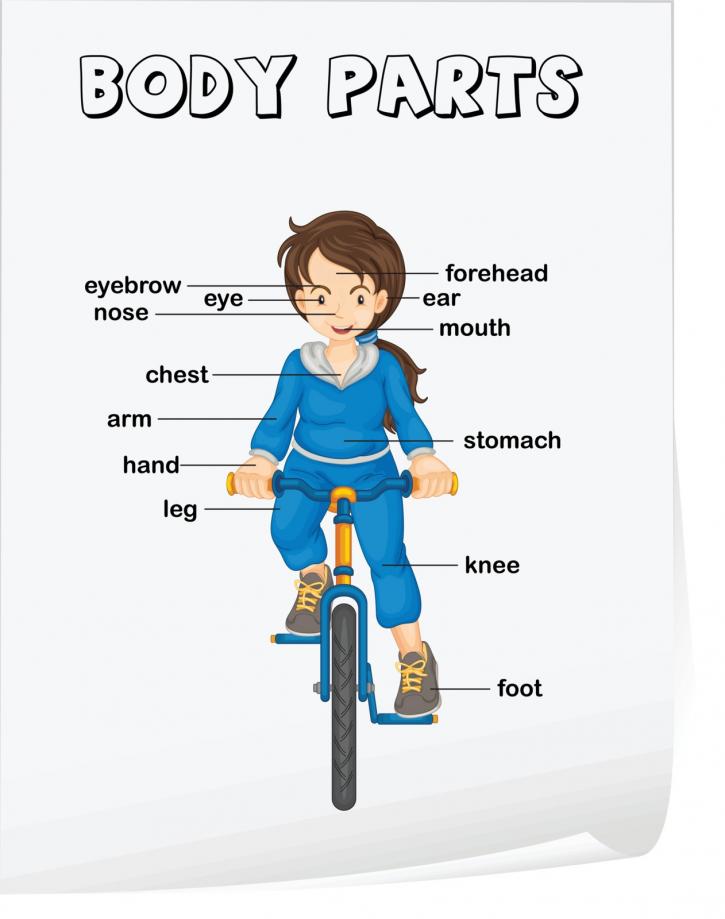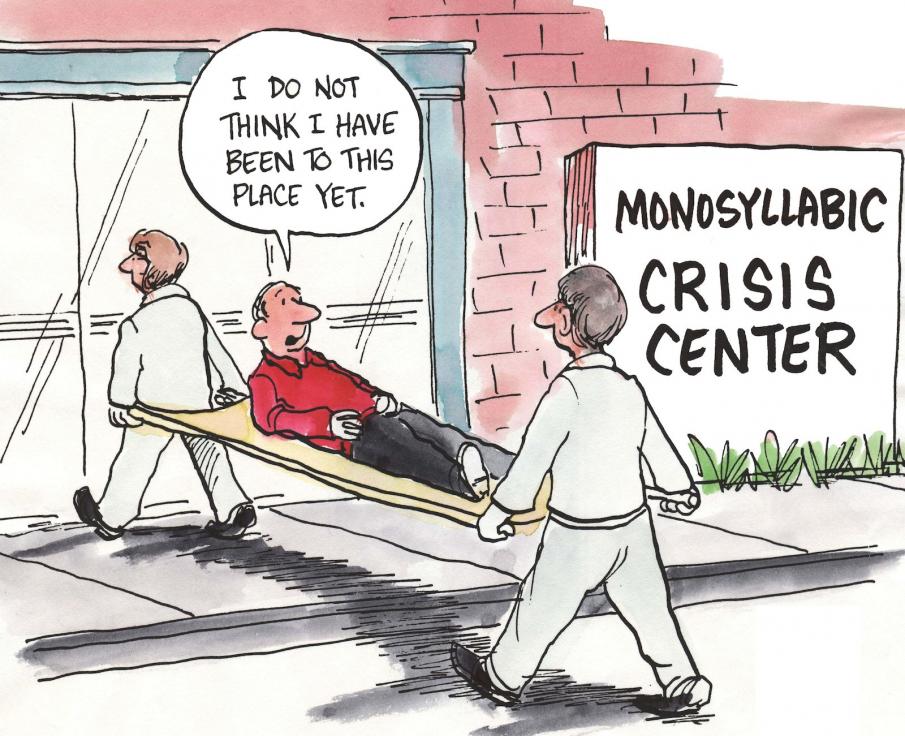Why You Need More Than Words For Language Fluency
 (Revised 5/31/2017)
(Revised 5/31/2017)
Words are important building blocks of languages. Without knowing them you cannot achieve language fluency in any new language you are learning.
So it's no surprise that people often ask: How many words do I need to know to become conversationally fluent?
This question comes without a precise answer, because it depends on the language, and to an extent on your life situation, your personal, and professional interests.
Still, there are estimates. For example, the linguist and polyglot Alexander Argüelles apparently believes that the 2000 most frequent words are those that let you express everything you could possibly want to say, although often by awkward circumlocutions.
A Lingholic blog post suggests: "When you learn 90-95 % of commonly used words, you'll understand practically all everyday conversations. The last 5-10% you'll be able to guess just from the context."
Then looking at the size of foreign dictionaries and the claims of a number of studies, the post notes: “A vocabulary of about 3000 words (not counting for inflections, plurals, etc.), then, would be the number necessary to efficiently learn from context with unsimplified text.”
Of course, having a precise number is nice. But, how do I know how many words I've learned? Perhaps the reverse is true: When I understand most of everyday conversations and texts in a foreign language, I probably know between 2000 and 3000 words.
Knowing frequently-used words is essential and will help you understand, as does the context in which you're having the conversation. And yes, knowing at least some of the 13 body parts, shown on this drawing above, in your target language will be useful. You'll certainly come across many of them in your studies.
But if you're learning a new language, you've probably realized that “communicating,” i.e. participating in a conversation, is not that easy, even if you've practiced tons of words: You have to be able to LISTEN and COMPREHEND and then also to SPEAK.
LISTENING COMPREHENSION
Listening comprehension is learned with what the well-known linguist Stephen Krashen calls listening to “comprehensible input.” A lot of it.
“comprehensible input.” A lot of it.
Real conversations are often unpredictable in content. So listening to various kinds of topics you're interested in will help prepare you. Withtime, you'll start noticing and assimilating certain language patterns, even if there's a great variety in vocabulary.
Also, when you first start listening it will appear that the sound stream goes too fast. It's an experience most language learners share. I still remember arriving in Italy some years ago. Even after having completed three Levels of the Pimsleur Italian audio program (90 lessons), I could not distinguish individual words while watching Italian TV.
After several weeks, the rapid-fire Italian seemed to slow down for me. I was more and more able to distinguish individual words, then sentences, and finally to understand the context and meaning.
If you're a novice practicing listening comprehension, start out slow, with individual words, phrases, then sentences. Short audio stories are a good next step. Make sure you know the meaning of what's being said.
For the more popular languages, there now are free podcasts and YouTube videos available. Many of the free or fee-based online language programs have podcasts or videos as well (including GamesforLanguage).
LEARNING WORD ORDER and GRAMMAR FORMS
 When you learn a foreign language, you're learning how to combine words in a new way that is meaningful in your new language. In other words, you're learning a second (or third, etc.) word-order system.
When you learn a foreign language, you're learning how to combine words in a new way that is meaningful in your new language. In other words, you're learning a second (or third, etc.) word-order system.
You're also learning grammar forms that don't exist in your own language. In English, you don't have noun gender, for example. French, Spanish, and Italian have two: masculine and feminine, German has three: masculine, feminine, and neuter.
Or, the language you're learning has a different way of forming a question. A case in point: French has three ways to ask a question, and none of them follow the pattern of English. That means you're learning two different grammar systems that your brain will alternate between.
Dealing with two (or more) grammar systems makes a teenager or adult different from young children learning their first language. Between the ages of two and three or so, toddlers go from one- or two-word “sentences” to quite sophisticated ways of asking questions, saying what they want, telling you what they saw, repeating what they heard, teasing you, etc.
Despite some hits and misses, children seem to catch on quickly which words go into what order, and what grammar forms to use. Most amazingly, often what they say are new combinations, and not just sentences they've heard and are repeating. Children are able to do that because of their brain's powerful “learning mechanisms,” which allow them to assimilate patterns of usage though listening.
Pattern learning also holds for adults learning other languages. The more we're exposed to the patterns of usage of a language, the better we'll acquire them. However, compared to children learning their native language(s), adults' exposure to a new language - in a class, online, reading, or listening - is typically more limited. (Unless, you're “immersed” in the language in the country or community where it is spoken, etc.)
For becoming conversationally fluent, you need to develop two skills: understand what's being said and create speech that is meaningful and relevant.
READING
You don't directly need reading for becoming conversationally fluent. Children learn to speak in sentences years before they learn how to write them.
 And in many countries there are still adults who can't read or write. In fact, I was shocked to read the following, when googling for “U.S. illiteracy rate”: “According to the National Center for Educational Statistics (NCES), 21 percent of adults in the United States (about 43 million) fall into the illiterate/functionally illiterate category.” [April 29, 2020] Other sites give much of the same statistics.
And in many countries there are still adults who can't read or write. In fact, I was shocked to read the following, when googling for “U.S. illiteracy rate”: “According to the National Center for Educational Statistics (NCES), 21 percent of adults in the United States (about 43 million) fall into the illiterate/functionally illiterate category.” [April 29, 2020] Other sites give much of the same statistics.
Adults don't NEED reading to become conversationally fluent. But for most, reading is still the most practical way to accelerate their learning in class, with exercises and apps, or with online programs.
Furthermore, as soon as you're able to read news articles, blog posts, even books in your new language, you have several potential benefits:
• For one, reading is another way to assimilate the word-order and grammar patterns of a language.
• Also, reading will expand your vocabulary and teach you how to guess meaning from context.
• Finally, by reading you acquire ideas and facts about topics you want to talk about. Everyday conversations don't stop at questions such as “Where are you from?” “What work do you do?” They are also very much about ideas, events, and if you're brave, about history and politics.
SPEAKING
 I very much like the motto of the late Dartmouth Professor John Rassias, a effective promoter of the immersion teaching method: “Don't learn to speak a language, speak to learn it.” Speaking fluently can only be learned by actually speaking.
I very much like the motto of the late Dartmouth Professor John Rassias, a effective promoter of the immersion teaching method: “Don't learn to speak a language, speak to learn it.” Speaking fluently can only be learned by actually speaking.
You won't learn to speak automatically just by doing lots of reading or listening. Yes, both will expose you to the characteristic word-order and grammar patterns of the language. Listening will train your ear to the language's sounds, which is essential when the sounds are quite different from your native language.
But, speaking a foreign language involves transforming your thoughts into specific sounds by training your vocal chords and moving your mouth in a certain way. It also means creating a stream of sounds that has the particular rhythm, pitch, and intonation, etc. of the language.
All of that has to be practiced aloud, typically by imitating native speakers. A teacher or tutor will be able to correct your pronunciation and point out different ways the tongue or mouth can produce the desired sounds.
Apps or online programs that have recording features are quite effective for improving your pronunciation. By playing back your own recordings and hearing how you sound next to the native speaker, you can work on making changes.
As a novice, start out slowly. Listen and repeat as often as you can. Don't be discouraged when you hear yourself for the first time. Memorize conversations, even act them out, mimic the native speakers – have fun sounding like a native!
FROM REPETITION to LANGUAGE FLUENCY
It's very hard to have a genuine conversation just with sentences that you've memorized. So how does one progress from a "low intermediate" level - where you can  ask and answer basic questions -to speaking freely about everyday topics? Certainly, repeating words and sentences aloud, and learning them by rote are essential techniques for a beginning learner.
ask and answer basic questions -to speaking freely about everyday topics? Certainly, repeating words and sentences aloud, and learning them by rote are essential techniques for a beginning learner.
But then, conversations with friends or exchange-partners who are native speakers, or a tutor who only uses the target language are the best way to improve your language fluency and conversational skills in your target language.
Talking with someone is a complicated back and forth that creates a context for words and sentences. With talking come all kinds of “filler words and sounds” that are normal for a casual conversation.
Participating often in such open-ended conversations will expose you again and again to the typical patterns of the language you're learning and prompt you to use these patterns yourself. So yes, learning 90-95% of words commonly used is an excellent language learning goal. And if you learn them in context, rather than as words in a list, you'll be building conversational skills.
Even if you understand all the words, you still have to decided whether someone is asking for something or telling you what you should do. You have to figure out how to formulate a question, express a reasoned opinion, or how to comment to a fast-moving conversation of your friends or family.
Getting to that level of fluency takes more than just words, it also takes much listening and many conversations on a variety of topics. And it takes friends and conversation partners to practice with.
Bio: Ulrike Rettig is the co-founder of GamesforLanguage.com. She is a lifelong language learner, growing up in Austria, the Netherlands, and Canada. You can follow her on Facebook, Twitter and Instagram, and leave any comments with contact or below.
Postscript: A comment by a Reddit reader (where the Post had been listed) prompted us to add a section "Learning Vocabulary" in a revised version which was published by Lingohut as Learning Words and More for Language Fluency.
